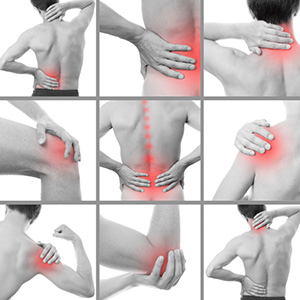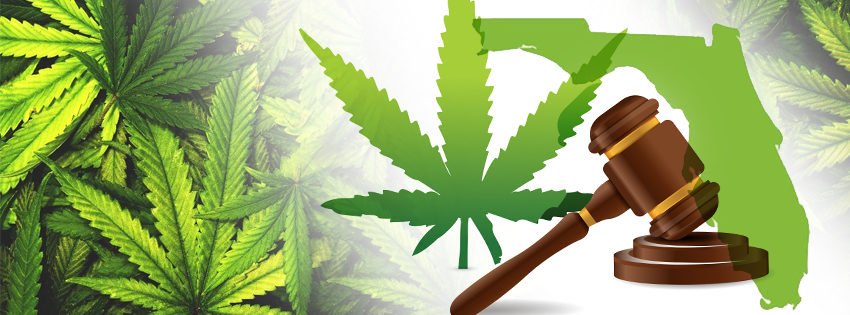Marijuana for Joint Pain Relief in Bradenton, Florida
Severe joint pain can be debilitating. Depending on which areas of the body are affected, joint pain can limit mobility, impair the function and dexterity of the hands, restrict flexibility, and cause intense discomfort. These effects can make it extremely difficult or impossible for the joint pain patient to participate in jobs, hobbies, or leisure activities he or she used to enjoy. Marijuana’s official designation in the US as a Schedule 1 drug— something with “no currently accepted medical use” — means it has been pretty tough to study. When overexcited by drugs, the reward system creates feelings of euphoria. This is also why some studies have suggested that excessive marijuana use can be a problem for some people — the more often you trigger that euphoria, the less you may feel during other rewarding experiences.
If you are a Florida resident aged 18 or older, and you are unhappy with the degree of pain relief your current medication is providing, you should speak with a Florida medical marijuana doctor about reducing your pain and increasing your comfort through a monitored, personalized Cannabis care plan. Peer-reviewed medical studies have conclusively shown that Cannabis is able to safely and significantly reduce joint pain with minimal, temporary side effects. Further, multiple conditions that cause joint pain can qualify the patient for Cannabis treatment under the Florida medical marijuana law.
You don’t have to suffer with disabling joint pain in silence. If you or someone you love is struggling to cope with severe, chronic joint pain, contact All Natural Medical Solutions today at our Bradenton Clinic location (800) 250-6737 to talk about whether Medical Cannabis is right for you.
In August, a study published in the European Journal of Preventive Cardiology appeared to suggest that marijuana smokers face a threefold higher risk of dying from high blood pressure than people who have never smoked — but the study came with an important caveat: it defined a “marijuana user” as anyone who’d ever tried the drug.
 How Does Medical Marijuana Relieve Hip, Knee, Shoulder, Wrist, or Hand Pain?
How Does Medical Marijuana Relieve Hip, Knee, Shoulder, Wrist, or Hand Pain?
One of the first questions people often ask is how medical marijuana relieves pain. The answer lies in a seldom-discussed body system known as the endocannabinoid system, or ECS.
Let’s look at each half of this word. In medical terminology, the prefix “endo-” means “within.” As you might have suspected from its similarity to the word “Cannabis,” a “cannabinoid” is a chemical compound in Cannabis.
Stated simply, cannabinoids are the “active ingredient” in marijuana, much the way acetaminophen is the active ingredient in Tylenol. The most famous cannabinoid is THC (Tetrahydrocannabinol), but scientists have actually identified approximately 85 cannabinoids, all of which work in concert to create a synergistic effect colloquially dubbed the “entourage effect.”
While your body doesn’t produce THC, it does makes several of its own cannabinoids, such as 2-Arachidonoylglycerol(2-AG) and N–arachidonoylethanolamine (anandamide). Because they are produced within your body, they are known as endocannabinoids.
The endocannabinoid system features two types of receptors: CB1 receptors, and CB2 receptors. Cannabinoids (such as THC) stimulate these receptors, which temporarily changes the way your endocannabinoid system functions. In turn, this temporarily changes the functions that are regulated by the endocannabinoid system – including pain perception. In short, marijuana reduces your perception of pain, making discomfort more tolerable and easier to manage.
Consider, for instance, findings from a 2016 study published in the Journal of Gastroenterology and Hepatology, which cited the results of a Canadian study conducted two years earlier. As the Gastroenterology study pointed out, nearly half of the 319 patients (48.2%, or roughly 154 individuals) who participated in the Canadian study “had improved joint pain” after using Cannabis.
Contact All Natural Medical Solutions today (800) 250-6737 to talk about whether Medical Cannabis is right for you or your family.
It has long been known medical marijuana doctors helps with pain management. From acute sharp short term pain, to chronic, deeper more long lasting pain, multiple studies have shown cannabis can replace opioids for pain management and help suffering patients live more normal lives. However, as we know, when it comes to cannabis in the United States, it’s never as straight forward as just going to the doctor and picking up a prescription. Well, that is slowly changing. As cannabis becomes more main stream in the US, medical cannabis is replacing opioids for pain management. There are thirty states with medical cannabis programs, more than a handful of states with high CBD cannabis laws and eight states with adult use cannabis, opening Cannabinoid medication access to a record number of Americans. Nowhere else is cannabis replacing opioids for pain management faster than in Florida. Another study looked at data from Medicaid and found similar results. Other studies have shown encouraging results with a twenty-five percent decrease in opiate overdoses in cities and states with easy access to medical marijuana such as Tampa Florida and other areas. In addition, baby boomers and seniors are using medical cannabis as replacements for opioids for pain management in record numbers. Seniors and boomers are learning that conditions like osteo-arthritis and other painful geriatric diseases are no match for Cannabinoid medicines, despite the higher cost. Cannabinoids are the unique compounds found in the cannabis plant. The two most common Cannabinoids cannabidiol (CBD) and Tetrahydrocannabinol (THC) have been shown in multiple studies to be powerful pain relieving compounds. The two compounds work much in the same way by dampening pain receptors throughout the body and reducing inflammation. By attaching to CB1 and CB2 receptors, Cannabinoids can treat pain in different parts of the body. These receptors make up the endocannabinoid system. The endocannabinoid system is a group of cells that help bring balance to the body. Both compounds were discovered in the 1960’s in Israel, but research into their therapeutic properties has been sparse in the US due to cannabis’ classification as a Schedule One Narcotic, a drug with no known medical use. For decades patients suffering from pain who wanted to use cannabis had to risk arrest for cannabis possession, or settle for more addictive opioid medications. Now with laws loosening, more and more people are finding medical cannabis can replace opioids for pain management.
If you would like more information on what medical marijuana in Florida can do for you and your family. Please contact our office (All Natural MD) today to see if you qualify!




